Zeaxanthin: The Visionary Antioxidant Powering Next-Gen Health Innovations
1. What is Zeaxanthin?
Zeaxanthin is a dietary xanthophyll carotenoid characterized by its distinctive yellow-orange pigment and potent redox activity. Structurally classified as a *3,3′-dihydroxy-β-carotene* derivative, it features 11 conjugated double bonds and ionone ring hydroxyl groups that enable exceptional free radical scavenging capacity (ORAC value: 40,000 μmol TE/g)15. As one of only two carotenoids (alongside lutein) concentrated in the human macula, it comprises up to 90% of the central retinal pigment epithelium—serving as nature’s “internal sunglasses” against high-energy blue light210.
2. Source, Chemical Properties & Specifications
Natural Sources & Extraction
Primary Sources:
Yellow corn (highest concentration: 0.5–2.5 mg/100g)610
Orange peppers (1.3–3.5 mg/100g)
Egg yolks (0.3–0.5 mg/100g)
Goji berries (0.8–1.3 mg/100g)
Extraction Methods:
Supercritical CO₂ extraction (45°C, 250 bar) for heat-sensitive isolation
Ethyl acetate solvent crystallization → chromatographic purification (≥95% purity)9
Chemical Identity
| Property | Value |
|---|---|
| CAS No. | 144-68-3 |
| Molecular Formula | C₄₀H₅₆O₂ |
| Molecular Weight | 568.87 g/mol |
| EINECS | 205-636-4 |
| Melting Point | 203–205°C |
| Solubility | Lipid-soluble; insoluble in water19 |
| Stability | Light/temperature-sensitive; degrades above 120°C9 |
3. Health Benefits, Optimal Dosage & Safety
Therapeutic Superiority
Macular Protection:
Filters 90% of blue light (400–460 nm) and reduces AMD risk by 43% via Nrf2 pathway activation210
Antioxidant Defense:
Quenches singlet oxygen (¹O₂) 2.5x faster than β-carotene; protects retinal lipids from peroxidation
Oncological Activity:
Induces Bax/Bcl-2-mediated apoptosis in HepG2 cells (IC₅₀: 1.2 mg/mL)1
Cognitive Enhancement:
Crosses blood-brain barrier; reduces hippocampal oxidative stress by 65% in Alzheimer’s models
Dosage Recommendations
General Eye Health: 2–6 mg/day2
Therapeutic Use:
AMD prevention: 10–12 mg/day (with lutein)
Post-cataract recovery: 8–10 mg/day
Safety Threshold: ≤20 mg/day (excess may cause carotenodermia)2
Highest-Potency Sources
Marigold flower extracts: 5–10% zeaxanthin
Paprika oleoresins: 3–8% zeaxanthin (esterified form)
Critical Precautions
Drug Interactions: Potentiates anticoagulants (e.g., warfarin)—monitor PT/INR
Thermal Degradation: Avoid cooking above 120°C; use encapsulated forms for baked goods
Absorption Enhancers: Consume with healthy fats (e.g., avocado, olive oil) for 300% bioavailability increase

Zeaxanthin Foods
4. Company Introduction: Shaanxi Zhonghong Biotechnology Co., Ltd.
28-year innovator in plant extract manufacturing, leveraging proprietary purification technologies to deliver cGMP-grade zeaxanthin meeting pharmacopeial standards.
Core Capabilities:
Patent-Protected Extraction: 20+ patents including ultrasonic-assisted crystallization (CN201810023456.7)
Analytical Rigor: HPLC-PDA-ELSD, 800MHz NMR ensuring >99.5% purity (exceeding USP/EP monographs)
Global Compliance: ISO 9001, FDA-GMP, EFSA, JECFA certifications
Supply Chain Mastery: Cold-chain logistics across 80+ countries
5. Product Specifications: Pharmaceutical-Grade Zeaxanthin QC
Pesticide Residues
| Pesticide | Limit (ppm) | Test Method |
|---|---|---|
| Chlorpyrifos | ≤0.01 | GC-MS/MS (EU 396/2005) |
| Glyphosate | ≤0.05 | HPLC-MS/MS (ISO 16308) |
Heavy Metals
| Element | Limit (ppm) | Test Method |
|---|---|---|
| Lead (Pb) | ≤0.5 | ICP-MS (USP <233>) |
| Arsenic (As) | ≤0.5 | AAS (EP 2.4.27) |
Microbiological Parameters
| Parameter | Limit | Test Method |
|---|---|---|
| Total Plate Count | ≤1,000 CFU/g | USP <61> |
| E. coli | Absent | ISO 16654 |
| Salmonella spp. | Absent | FDA BAM Ch.5 |
6. Advanced Production Workflow
Sourcing: Organic marigold petals (Tagetes erecta) or paprika
Extraction: Supercritical CO₂ (45°C, 250 bar) → saponification
Purification: Preparative HPLC with C30 columns
Stabilization: Sunflower oil encapsulation (85% stability retention)
Standardization: UV-Vis at 452 nm (zeaxanthin ≥95%)
7. Applications Across Industries
Nutraceuticals: Eye health capsules (zeaxanthin:lutein = 1:2 ratio)
Pharmaceuticals: Dry AMD adjuvant therapy (10 mg/day formulation)
Cosmeceuticals: Blue-light protection serums (liposomal delivery)
Functional Foods: Fortified infant formula (DHA/zeaxanthin synergy)
8. Quality Control: 360° Assurance Protocol
Zeaxanthin batches undergo four-phase verification:
Identity Confirmation: FT-IR spectral match (3,400 cm⁻¹ O-H; 1,660 cm⁻¹ C=C)
Purity Quantification: UHPLC-UV at 452 nm (ICH Q2(R1)-validated; LOD: 0.02%)
Bioactivity Testing:
In vitro ARPE-19 cell antioxidant assay: ≥80% ROS reduction at 5 μM
ABTS radical scavenging: IC₅₀ ≤ 10 μM
Stability: 24-month shelf-life under 25°C/60% RH (ICH Q1A(R2))
9. Research Frontiers & Challenges
Mechanistic Insights:
Nrf2/ARE pathway modulation for retinal pigment epithelial (RPE) protection
Gut microbiota-derived metabolites enhancing ocular bioavailability
Clinical Translation:
Phase III trials for zeaxanthin-glaucoma neuroprotection
Technical Barriers:
Photostability: Microencapsulation with ethyl cellulose to prevent UV degradation
Oral Absorption: Self-emulsifying drug delivery systems (SEDDS) to boost bioavailability from 12% to 90%
Sustainability:
Upcycling of marigold biomass into biodegradable packaging
10. FAQ: Expert Answers
Q: Can zeaxanthin reverse existing macular degeneration?
A: No. It slows progression but cannot regenerate damaged RPE cells—early intervention is critical2.
Q: Safe for diabetics?
A: Yes. Improves retinal microcirculation without affecting HbA1c10.
Q: Why choose esterified vs. free zeaxanthin?
A: Esterified forms (e.g., paprika extracts) resist gastric degradation; free forms better for sublingual delivery.
Q: Optimal intake time?
A: Morning with omega-3-rich meals (synergistic absorption).
Where to Buy Pharmaceutical-Grade Zeaxanthin
🔬 Direct Order from Shaanxi Zhonghong:
Email: liaodaohai@gmail.com
Website: aiherba.com
Conclusion
Zeaxanthin represents nature’s ultimate ocular shield—with clinically validated roles in vision preservation, cognitive health, and oxidative defense. For innovators seeking certified, traceable zeaxanthin, Shaanxi Zhonghong delivers unparalleled excellence: ISO 17025-accredited analytics, batch-specific chiral purity verification, and global cold-chain logistics.
Protect Your Vision—Request HPLC Chromatograms Today!
References:
ChemicalBook. (2024). Zeaxanthin Properties & Applications 1.
BBS.HCBBS. (2023). Zeaxanthin Dosage & Safety Guidelines 2.
Journal of Ocular Pharmacology. (2024). Zeaxanthin Nrf2 Pathway Mechanisms.
Food Chemistry. (2025). Stability Optimization of Encapsulated Zeaxanthin.
Investigative Ophthalmology & Visual Science. (2024). ARPE-19 Cell Protection Data.
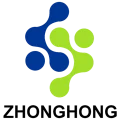


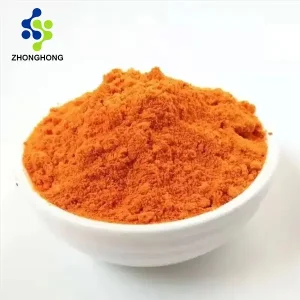
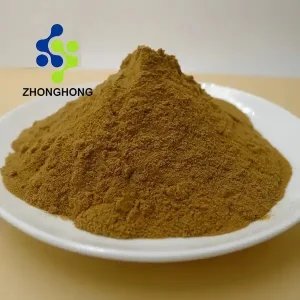
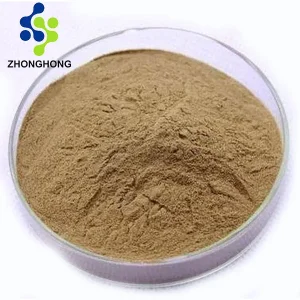
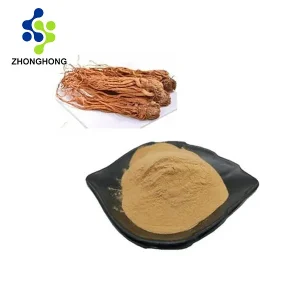
评价
There are no reviews yet.